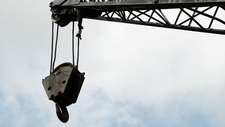Simple Machines to Do Work
Supporting

TEKS Objective
The student is expected to demonstrate and observe how position and motion can be changed by pushing and pulling objects to show work being done such as swings, balls, pulleys, and wagons.
Essential Understanding
The student knows that forces cause change and that energy exists in many forms.
Science Background
Mechanics and Motion: Physics4kids.com (website) - Explains the basics of motion through pictures and text.
Mechanics and Motion
by Andrew Rader, Physics4Kids, www.physics4kids.com
Simple Machines: Franklin Institute (website) - Describes how we apply mechanical energy to do work.
Simple Machines
Franklin Institute, www.fi.edu
Work, Energy, and Power: The Physics Classroom (website) - Basic terminology and concepts related work, different forms of energy, and power.
Work, Energy, and Power
The Physics Classroom, www.physicsclassroom.com
Work and Energy: Cliffs Notes (website) - Detailed explanation of “work” as a physics concept and different forms of energy.
Signature Lesson
Be Inventive! Museum of Science (website) -Students explore mechanical energy and observe how force can cause a change in position and motion by designing a machine to solve a specific challenge.
- Supporting Lessons
- Extensions
- Assessment Ideas
- Literature Connections
- Related
TEKS - Additional Resources
Supporting Lessons
Sketching Gadget Anatomy: Museum of Science (website) - Students learn how simple machines work (mechanical energy) by sketching the machines’ parts.
Elaboration Lessons and Extensions
Rubber Band Racers: eGFI Dream Up the Future (website) - Students construct model cars and use the potential energy in stretched rubber bands to propel them.
Rubber Band Racers
eGFI, www.egfi-k12.org
Simple Machines: EdHeads (interactive video) – Students learn about simple and compound machines with examples found at home in this engaging animation.
Assessment Ideas
Challenge students to devise as many ways as possible to move a heavy object (thick book) from one place to another. Provide different materials for students to use, such as a wagon, pulleys, wheels, tubes, string, sticks, etc.
Literature Connections
Forces and Motion: From High-speed Jets to Wind-up Toys. DeRosa, T., Reeves, C. (ISBN-13: 978-0890515402)
How Do You Lift a Lion? Wells, Robert (ISBN-13: 978-0780779228)
Simple Machines. Thompson, Gare (ISBN-13: 978-0792284994)
Make It Move. VanVoorst, J. (ISBN-13: 978-0736828987)
Pulleys and Gears. Glover, David (ISBN-13: 978-1403485939)
Additional Resources
Simple Machines: EdHeads (interactive video) - Students learn about simple and compound machines with examples found at home in this engaging animation.
Simple Machines
EdHeads, www.edheads.org
Simple Machines: MIKIDS (website) - Interactive activity in which students match pictures with the type of pulley they represent.
Simple Machines
MIKIDS, www.mikids.com
Burglar Catcher: FOSS (website) - Rube has built a device using levers and pulleys to catch someone trying to break into his house. This fun interactive site asks students to make adjustments that get Rube’s “Burglar Catcher” working.
TEKS Navigation
Grade 3
Need Assistance?
If you need help or have a question please use the links below to help resolve your problem.

Comments